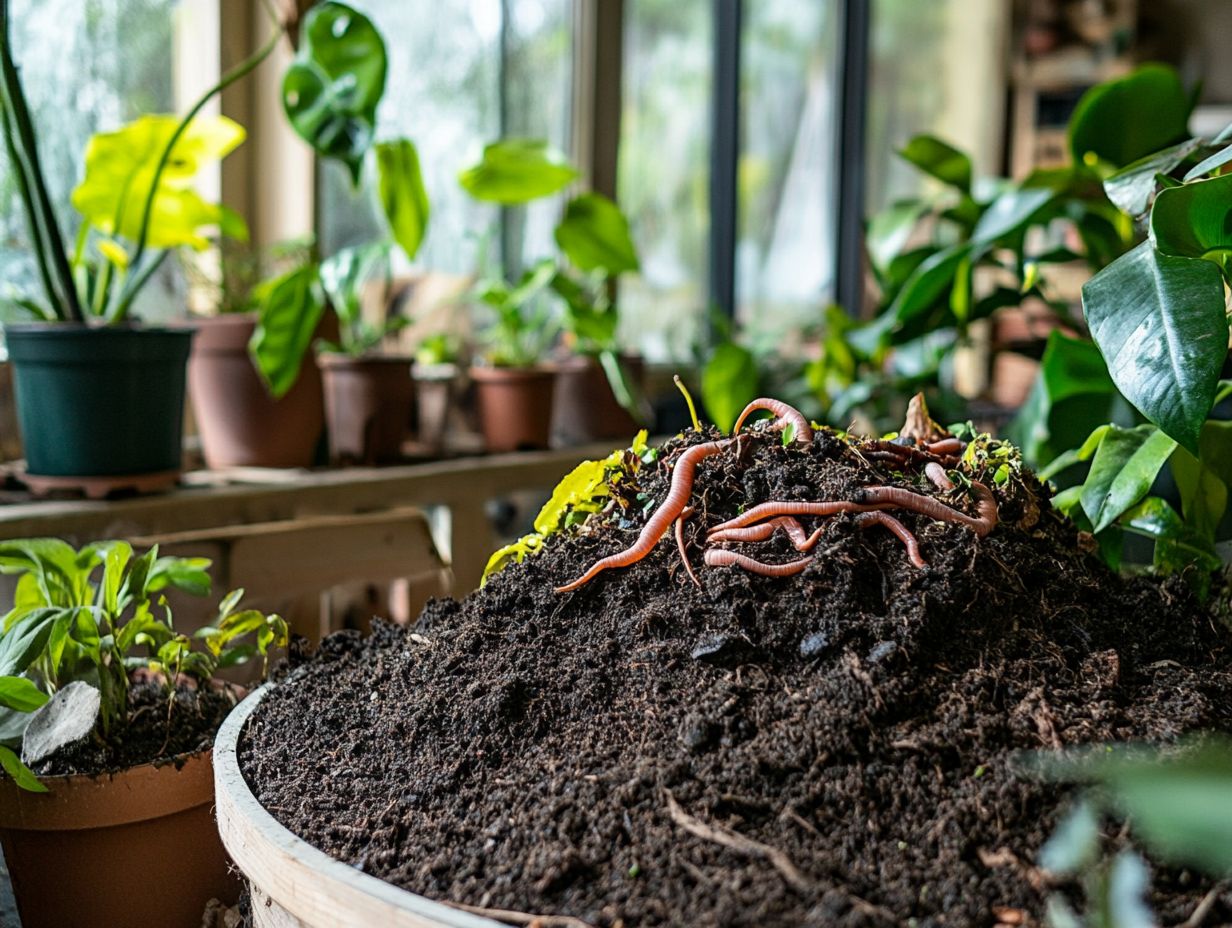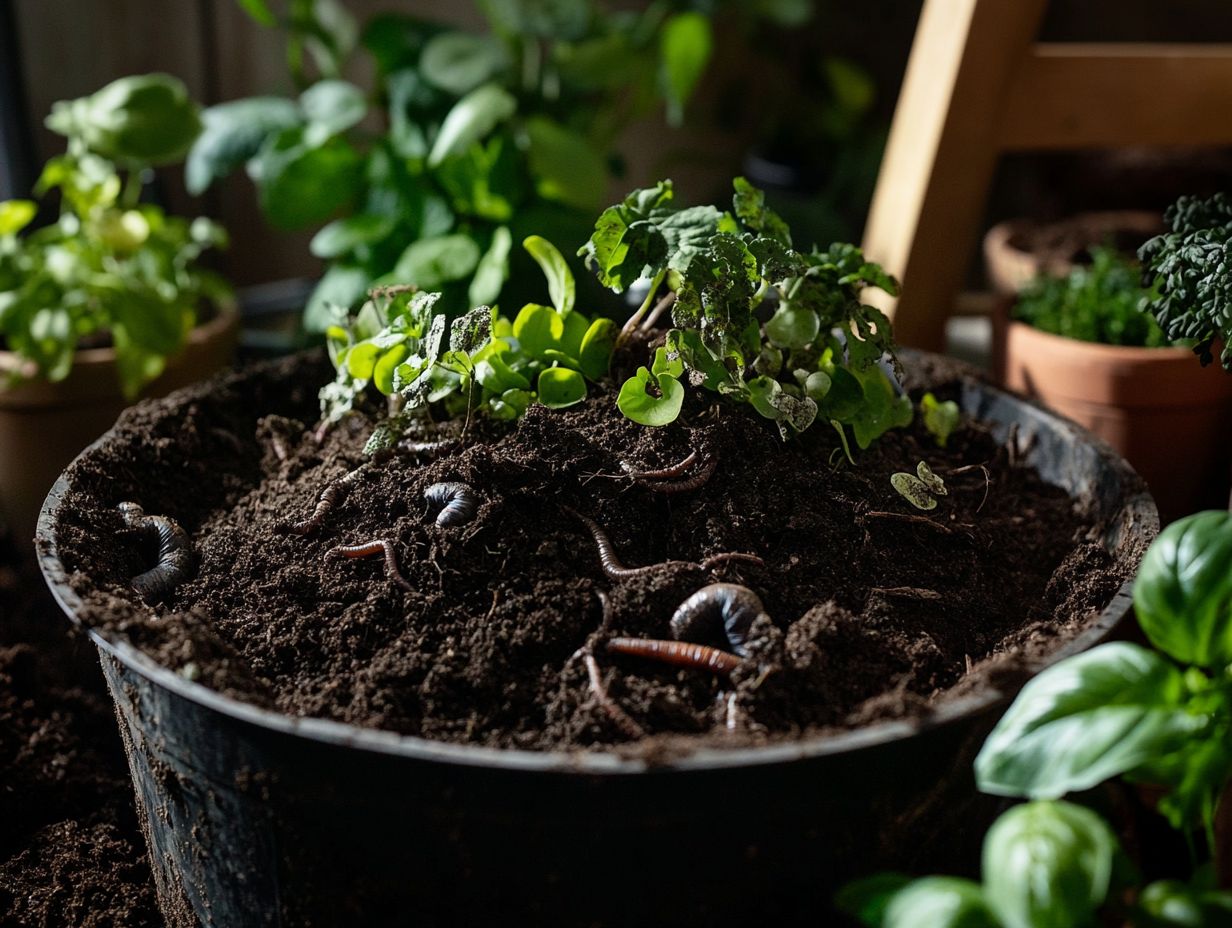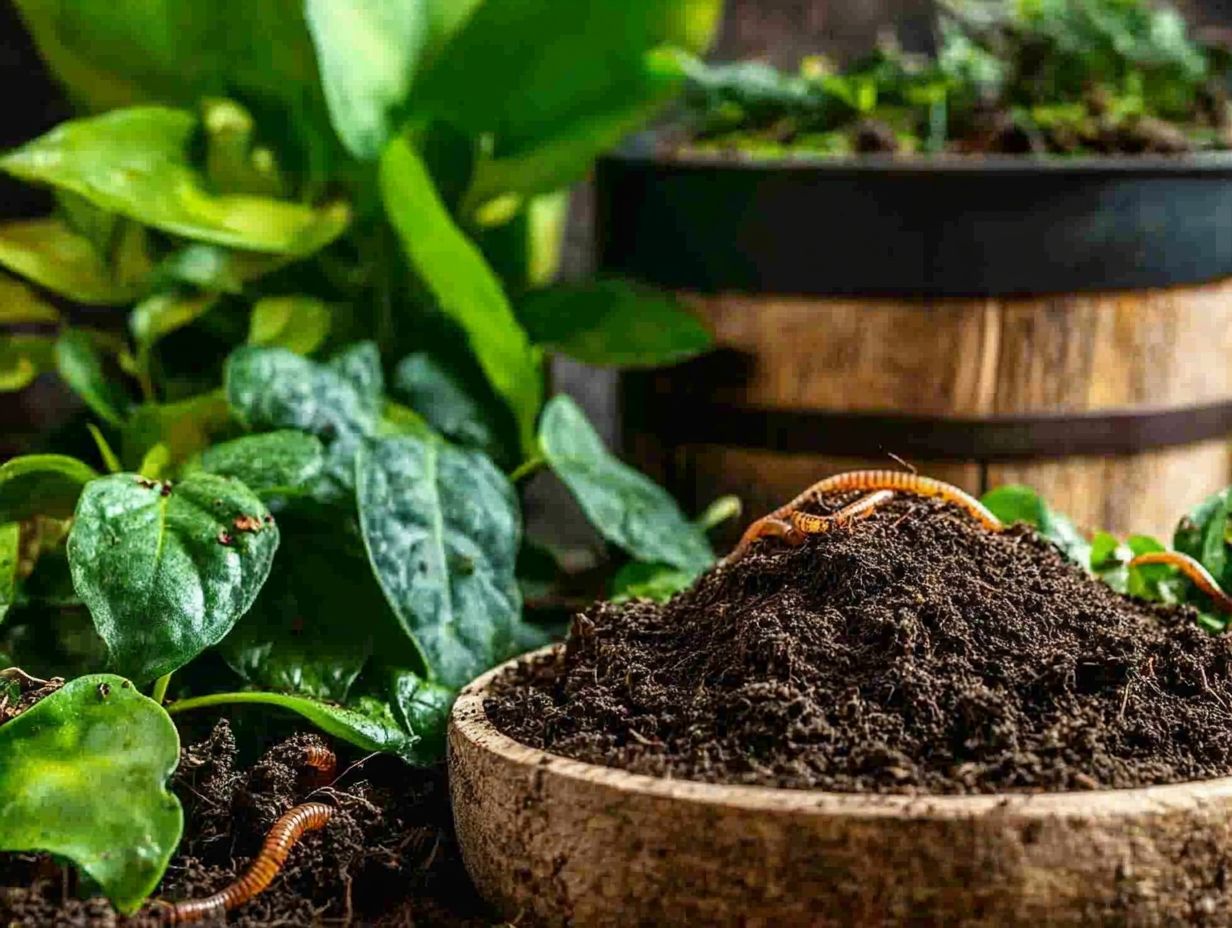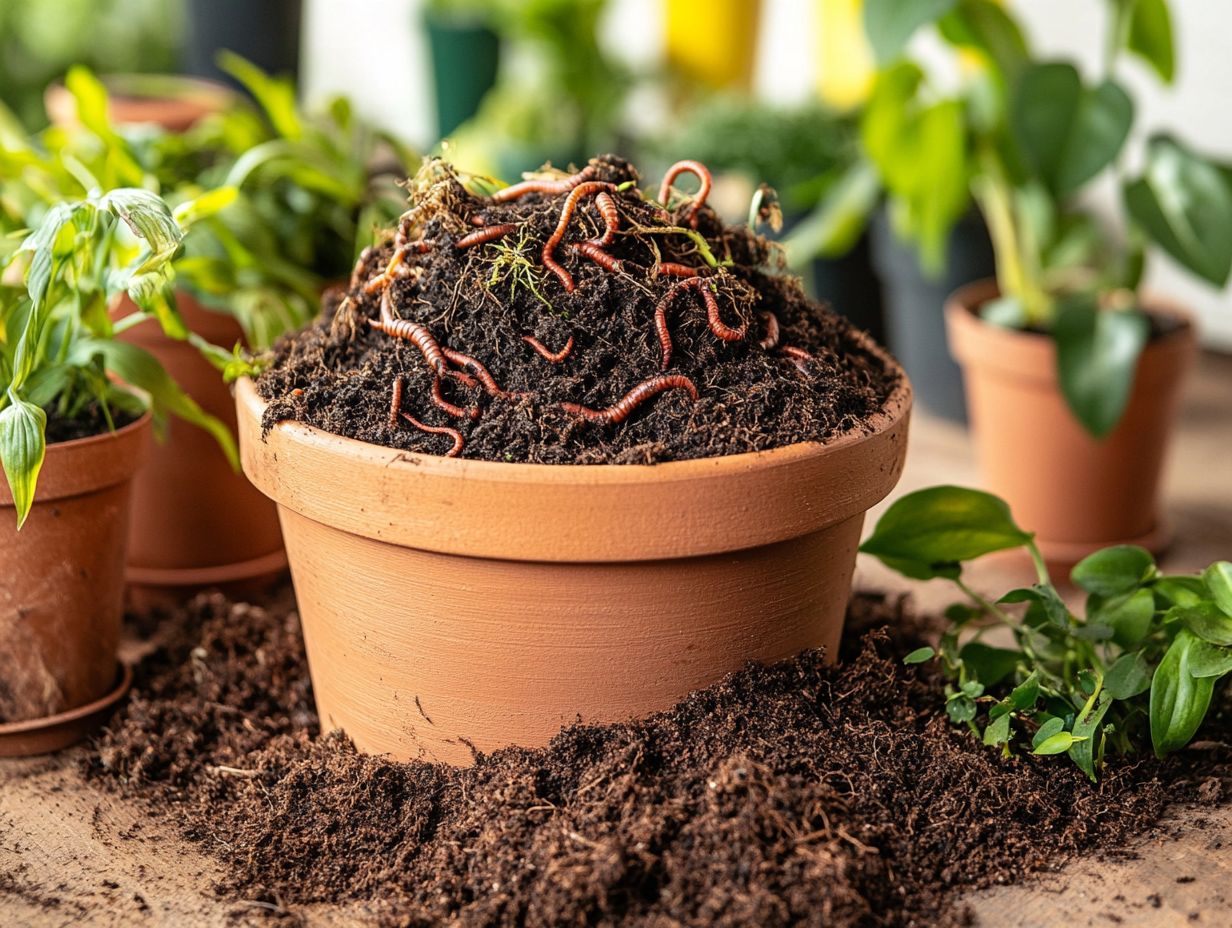How to Pack Light for Eco-Friendly Travel
Houseplants flourish in environments that closely resemble their natural habitats, and a crucial element for their success is living soil.
This dynamic ecosystem not only promotes robust plant growth but also encourages sustainable gardening practices.
You will discover the myriad benefits of incorporating living soil, the vital components that contribute to its vitality, and the steps to create and maintain your own living soil mix.
By grasping and applying these principles, you can nurture healthier, more vibrant houseplants that truly thrive.
Contents
- Key Takeaways:
- The Importance of Living Soil for Houseplants
- Components of Living Soil
- Creating a Living Soil Mix
- Maintaining and Revitalizing Living Soil
- Benefits of Using Living Soil for Houseplants
- Frequently Asked Questions
- What is living soil and why should you care?
- How do I create living soil for my houseplants?
- What are the benefits of using compost in living soil?
- Can I use store-bought potting soil for living soil?
- How often should I replace the living soil for my houseplants?
- Are there any signs my houseplant needs new living soil?
Key Takeaways:

- Living soil benefits houseplants by providing essential nutrients, promoting healthy growth, and supporting a sustainable garden.
- The components of living soil, including organic matter, microorganisms, and nutrients, work together to create a nourishing environment for houseplants.
- Creating and maintaining a living soil mix involves choosing the right ingredients, proper watering and fertilization, and periodically adding amendments through composting.
The Importance of Living Soil for Houseplants
Living soil is essential for the health and vitality of your houseplants, creating a flourishing environment rich in diverse biology, vital nutrients, and a well-balanced ecosystem.
This dynamic mix of microorganisms and organic matter promotes optimal plant growth while improving soil structure, which is key for sustainable gardening in containers and pots.
By understanding the properties of living soil, you can ensure that your houseplants not only survive but truly thrive, resulting in healthier plants and greater resistance to pests.
Benefits of Using Living Soil
The benefits of using living soil in your houseplants are truly remarkable, leading to improved soil health, enhanced plant growth, and a more resilient ecosystem.
A living soil mix cultivates a rich community of microorganisms that work together harmoniously to promote nutrient cycling, pest resistance, and overall plant vitality.
When your houseplants thrive in such an environment, you ll notice not only stronger growth patterns but also a notable increase in their resistance to diseases.
For example, living soil allows beneficial bacteria and fungi to break down organic matter, releasing essential nutrients like nitrogen and phosphorus key players in plant development. This nutrient-rich foundation encourages robust root systems, enabling your plants to absorb water and minerals more effectively.
Incorporating living soil leads to lush greenery and vibrant blooms while supporting sustainable gardening practices. Choosing living soil is a game changer for your indoor garden!
Components of Living Soil
The components of living soil play a crucial role in its ability to function effectively and promote plant health. They establish a dynamic ecosystem, brimming with organic matter, microorganisms, and essential nutrients.
Key elements like compost, compost tea, and a well-balanced approach to the balance of carbon and nitrogen are vital. These factors contribute to the soil food web, facilitating nutrient cycling and creating optimal conditions for your plant roots to thrive.
Organic Matter
Organic matter is the cornerstone of living soil, acting as the backbone for nutrient cycling and soil fertility.
It enriches the soil, enhances water retention, and provides a habitat for beneficial microorganisms elements that are essential for sustainable gardening.
By incorporating materials like compost, aged manure, and leaf litter into your soil, you not only boost its health but also cultivate a vibrant ecosystem.
These organic amendments break down over time, releasing vital nutrients that your plants eagerly absorb, promoting their growth and resilience. For example, compost made from your kitchen scraps and yard waste can significantly enhance microbial activity, improving nutrient availability.
Mulching with grass clippings or wood chips can further enhance moisture retention while simultaneously keeping those pesky weeds at bay. These practices create a more productive garden and contribute to the long-term sustainability of your soil ecosystem.
Start your journey to healthier houseplants today by creating your own living soil mix!
Microorganisms

Microorganisms are the unsung heroes of your soil. They play a vital role in creating a thriving soil food web that supports healthy plant growth. These tiny organisms enhance nutrient availability, improve soil structure, and form symbiotic relationships with plant roots, particularly with mycorrhizal fungi.
This diverse microbial community includes bacteria, fungi, protozoa, and nematodes. Each type has distinct functions that enrich soil fertility and promote plant health. Bacteria break down organic matter, releasing essential nutrients such as nitrogen, phosphorus, and potassium for plants to absorb.
Fungi, especially a type called mycorrhizal, extend their networks to access nutrients beyond the root zone. This creates an efficient nutrient exchange system.
These microorganisms are crucial for decomposing organic materials, contributing to humus formation and enhancing water retention in the soil. Their interactions support robust plant development and nurture a resilient ecosystem, making microbial life essential for sustainable agriculture and environmental health.
Nutrients
Nutrients are essential for sustaining plant health and fertility within living soil. They directly influence growth, flowering, and fruiting. Key elements like nitrogen, potassium, and phosphorus, along with trace minerals, are vital for optimal plant development.
Each nutrient plays a unique role. For instance, nitrogen promotes lush green foliage, while phosphorus helps develop strong root systems and facilitates energy transfer. Potassium enhances overall plant resilience.
Utilize organic fertilizers such as compost, bone meal, and fish emulsion to significantly boost nutrient availability! Soil amendments like well-rotted manure and green manures enrich the soil, ensuring a consistent supply of essential nutrients.
By maintaining soil fertility through these natural sources, you support vibrant growth and nurture a balanced ecosystem that encourages beneficial microorganisms, further enhancing nutrient availability!
Creating a Living Soil Mix
Creating a living soil mix requires selecting the perfect combination of ingredients to establish a balanced environment for both plants and microorganisms. Incorporate soil amendments like compost, peat moss, and worm castings, along with glacial rock dust for essential trace minerals. This way, you can craft a nutrient-rich substrate that promotes robust plant growth and resilience.
This thoughtful approach ensures your garden thrives, nurturing both the flora and the beneficial organisms that support it.
Choosing the Right Ingredients
Selecting the right ingredients for your living soil mix is crucial for achieving optimal plant health and soil fertility. Essential components like compost, peat moss, and worm castings elevate organic matter levels, improve soil structure, and supply vital nutrients for plant growth.
These ingredients work together harmoniously, creating a thriving ecosystem that nurtures beneficial microorganisms while aiding moisture retention and enhancing drainage. Compost adds a diverse array of nutrients and feeds the soil life, while peat moss encourages aeration and boosts water retention. For more tips on keeping your plants healthy, check out this guide on how to maintain soil moisture for indoor plants. Worm castings are rich in microbial life and an excellent source of readily available nutrients.
Each component not only contributes to a balanced nutrient profile but also strengthens the soil’s ability to support plants over time, cultivating a resilient gardening environment that flourishes with vitality.
Mixing and Preparing the Soil
Mixing and preparing the soil is a crucial step in cultivating a living soil ecosystem, which contains active microorganisms that help plants thrive and nurtures healthy plant growth. Proper aeration and soil structure are essential, enhancing water retention and nutrient availability to elevate your soil s performance.
To achieve this optimal blend, focus on incorporating organic materials like compost, peat moss, and well-rotted manure. Adding aggregates such as perlite or vermiculite bolsters air circulation. It’s essential to create a balanced mixture with varying particle sizes, as this improves drainage and prevents compaction. Additionally, knowing how to test soil quality for indoor plants can help ensure your plants thrive.
Regularly turning the soil encourages air movement and promotes microbial life, which supports robust root development. Act now to maintain proper moisture levels; it’s crucial for your plants’ success, as it boosts microbial activity, enriching the soil’s ecosystem and fostering an environment where plants can truly flourish. For more insights, check out this guide on how to improve soil texture for houseplants.
Maintaining and Revitalizing Living Soil

Revitalizing your living soil is the key to thriving plants! Engaging in regular practices like composting, conducting soil tests, and implementing proper watering techniques along with utilizing organic fertilizers are vital. They boost soil fertility and enhance microbial life.
Proper Watering and Fertilization
Proper watering and fertilization are essential for maintaining living soil. They ensure your plants receive the nutrients they need while promoting optimal water retention. By utilizing organic fertilizers and understanding the specific water requirements of your houseplants, you can significantly enhance their growth and resilience.
When considering the health of your garden or indoor plants, recognize that living soil is a dynamic ecosystem where beneficial microorganisms flourish. These microorganisms not only break down organic materials but also play a crucial role in improving nutrient availability for your plant roots. Opting for organic fertilizers allows you to sustainably enrich the soil, providing a slow release of nutrients that aligns perfectly with your plants’ growth cycles. Additionally, exploring top soil amendments for healthy indoor plants can further enhance your gardening efforts.
Well-timed watering helps create a balanced environment, preventing issues like over-saturation or drought both of which can stress your plants and hinder their overall development.
Composting and Adding Amendments
Composting and amending your soil are essential steps for cultivating vibrant, living soil. These practices not only replenish nutrients but also enhance soil structure over time. By incorporating organic residues and various amendments, you can significantly boost microbial life, nutrient levels, and overall soil health.
Utilizing kitchen scraps, yard waste, and other organic materials allows you to create a nutrient-rich compost that acts as an exceptional foundation for your soil amendments. Introducing shredded leaves, straw, or grass clippings adds carbon, while your food scraps provide valuable nitrogen.
Earthworm castings and well-rotted manure are fantastic choices for amplifying microbial activity and nurturing a thriving ecosystem. Consider adding natural minerals such as rock phosphate or greensand to enrich your soil further. To ensure your houseplants thrive, it’s also important to understand what to know about soil for houseplants. These enrichments promote optimal nutrient cycling and create a flourishing environment for beneficial organisms that support robust plant growth.
Benefits of Using Living Soil for Houseplants
The advantages of utilizing living soil for your houseplants extend well beyond just growth. They create a flourishing environment that effectively tackles common pest issues and boosts nutrient density in your plants.
By cultivating a healthy ecosystem within the soil, you can nurture robust root systems and elevate the overall vitality of your greenery.
Healthier Plants and Sustainable Gardening
Living soil leads to healthier plants! It s a key part of sustainable gardening. By using organic fertilizers and eco-friendly practices, you help your plants thrive while making them stronger against stress and disease.
Nurturing a variety of tiny living organisms in the soil creates a balanced ecosystem. This helps in cycling nutrients and retaining water. It promotes stronger root systems while significantly reducing the need for synthetic inputs.
Incorporating compost, mulching, and crop rotation are practical strategies to enrich your soil. Using cover crops boosts the nutrient profile and minimizes soil erosion.
Embracing these sustainable methods not only optimizes your plants’ health but also contributes positively to the surrounding ecosystem. It fosters biodiversity and resilience in the process.
Frequently Asked Questions

What is living soil and why should you care?
Living soil is packed with active microorganisms, including beneficial bacteria and fungi. These tiny helpers break down organic matter and release nutrients for your plants, providing a balanced and nutrient-rich environment for them to thrive.
How do I create living soil for my houseplants?
To create living soil, mix organic materials like compost, worm castings, and coconut coir in equal parts. This combination creates rich and nutritious soil for your plants!
What are the benefits of using compost in living soil?
Compost retains moisture, provides nutrients, and supports the growth of beneficial microorganisms. It also improves soil structure and aeration, which is crucial for healthy root growth.
Can I use store-bought potting soil for living soil?
While you can use store-bought potting soil for houseplants, it s not true living soil. Most commercial potting soils have synthetic fertilizers and lack enough organic matter to support microorganism growth. It s best to create your own living soil using organic materials.
How often should I replace the living soil for my houseplants?
Living soil doesn t need frequent replacement since microorganisms continue to break down organic matter and replenish nutrients. However, refreshing the soil every 1-2 years by adding a new layer of compost and other organic materials is recommended.
Are there any signs my houseplant needs new living soil?
If your houseplant shows signs of wilting, yellowing leaves, or slow growth, it may need refreshing. Check the top layer of soil for any signs of mold or fungus, which can indicate an imbalance in the microorganisms.






